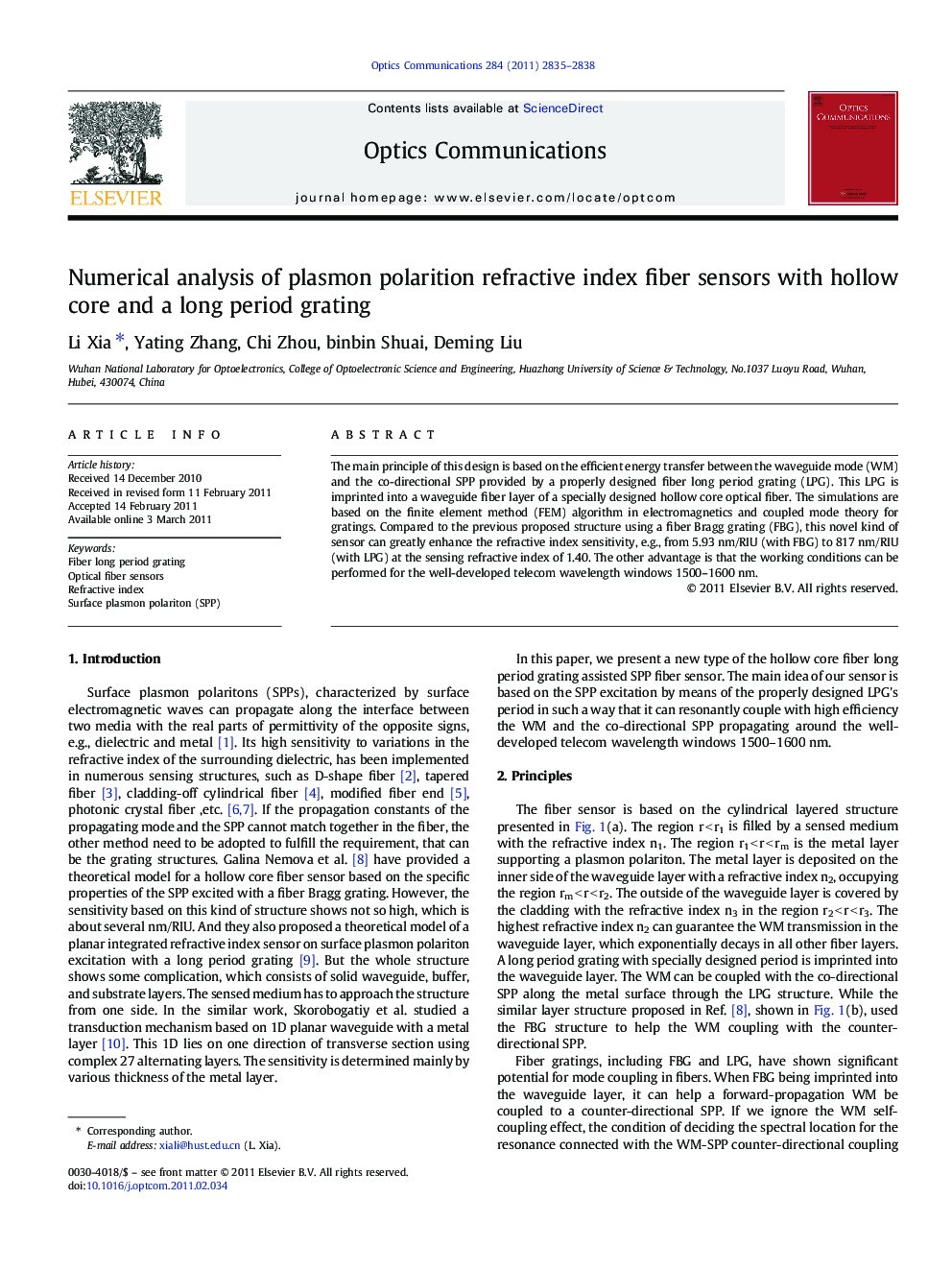| Article ID | Journal | Published Year | Pages | File Type |
|---|---|---|---|---|
| 1537449 | Optics Communications | 2011 | 4 Pages |
The main principle of this design is based on the efficient energy transfer between the waveguide mode (WM) and the co-directional SPP provided by a properly designed fiber long period grating (LPG). This LPG is imprinted into a waveguide fiber layer of a specially designed hollow core optical fiber. The simulations are based on the finite element method (FEM) algorithm in electromagnetics and coupled mode theory for gratings. Compared to the previous proposed structure using a fiber Bragg grating (FBG), this novel kind of sensor can greatly enhance the refractive index sensitivity, e.g., from 5.93 nm/RIU (with FBG) to 817 nm/RIU (with LPG) at the sensing refractive index of 1.40. The other advantage is that the working conditions can be performed for the well-developed telecom wavelength windows 1500–1600 nm.
Research Highlights► The efficient energy transfer between the waveguide mode (WM) and the co-directional SPP is investigated on a special hollow core optical fiber with a properly designed fiber long period grating (LPG). ► This novel kind of sensor can greatly enhance the refractive index sensitivity to 817 nm/RIU at the sensing refractive index of 1.40. ► The working conditions can be performed for the well-developed telecom wavelength windows 1500-1600 nm.
